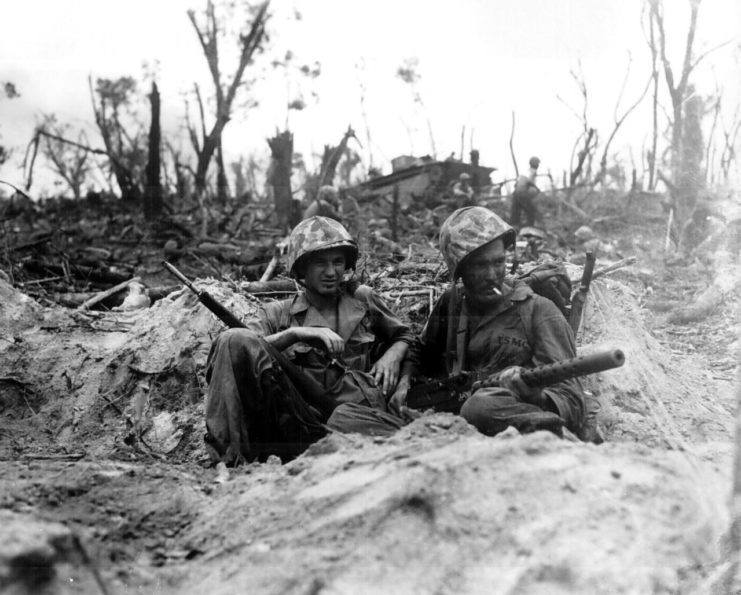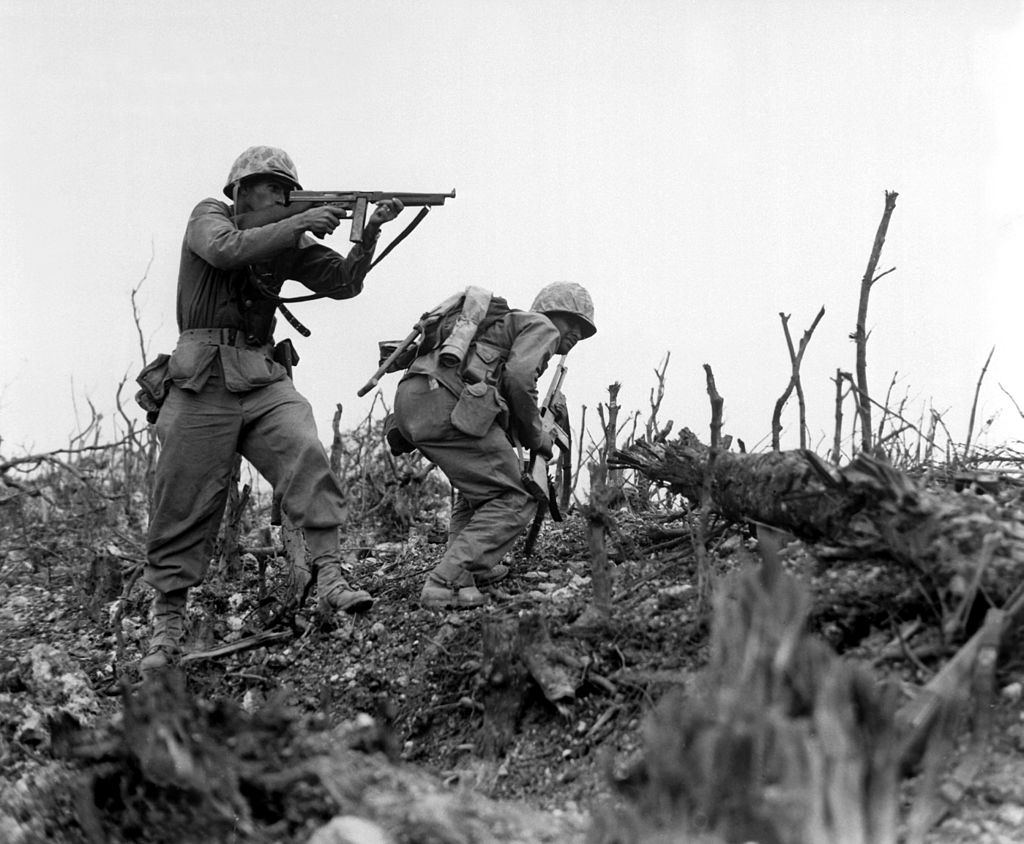United States Marine Corps PFC Edward Ahrens holds a special place in the Corps’ long history of larger than life characters whose bravery and tenacity in combat have made them immortal in the memories of their colleagues. A man of small stature and tremendous courage, Ahrens was all of 140 pounds of deadly fighting spirit – a fact that makes his story all the more incredible.
Dispatched from basic training at Parris Island, SC after enlisting in February of 1942, Ahrens’ boots could hardly have been broken in by the time he joined the USMC’s A Company, 1st Raider Battalion in Quantico in preparation for deployment.
When 1st Raider Battalion was sent to the British Solomon Islands, Ahrens joined C Company for the Battalion’s second assault on the Japanese-defended beach at Tulagi on the 7th of August. Just four months after enlisting, the kid from Dayton, KY was pushing uphill through the jungle seemingly unseen by the occupying forces on his way to push back the entrenched Japanese army.

The Japanese had taken possession of the British Solomon Islands shortly after the attack on Pearl Harbour in December of 1941, intending to use these and other Pacific islands to create a defensive front. The United States Navy made short work of dismantling many Japanese positions in the six months that followed at Midway and Coral Sea, and continued to establish their own Pacific presence by pushing Japanese forces out of strategic positions in places like Tulagi.
While the battle for the island of Guadalcanal was far more bloody and drawn out than the battle for Tulagi (taking six months of nearly-constant combat to prevail) the story of Ahrens bravery has permanently etched the battle for Tulagi into the history books.,
When C Company dug in for the night along the defensive flank of the main attack, Ahrens was assigned to a security group along the right side of the advance where he would stand guard overnight. The advancing forces had largely evaded contact during the second assault, but this was not to last.
When a ferocious overnight counter-attack by the resident Japanese forces forced a wedge between A and C companies, Ahrens rose to the occasion, more than earning his salary as the Japanese advanced on the marines’ command post in a former British Government building. During the assault, Ahrens was engaged by an overwhelming group of Japanese soldiers in brutal hand to hand combat.
He was found the next morning by Major Lew Walt, fatally wounded in his foxhole, surrounded by the bodies of 13 Japanese troops.

Ahrens final words to Major Walt will forever echo through the Corps: “The bastards tried to come over me last night – I guess they didn’t know I was a Marine.”
According to Walt: “He was slumped in one corner of the foxhole covered with blood from head to foot. In the foxhole with him were two dead Japs, a lieutenant and a sergeant. There were eleven more dead Japs on the ground in front of his position. In his hands he clutched the dead officer’s sword”
Another Article From Us: URGENT APPEAL FOR HELP – HMS HERMES NEEDS YOUR SUPPORT. LAST CHANCE!
Ahrens was posthumously awarded the Navy Cross for his bravery, the citation noting that he continued to fight after being mortally wounded and breaking up what would have been a devastating enemy charge.
